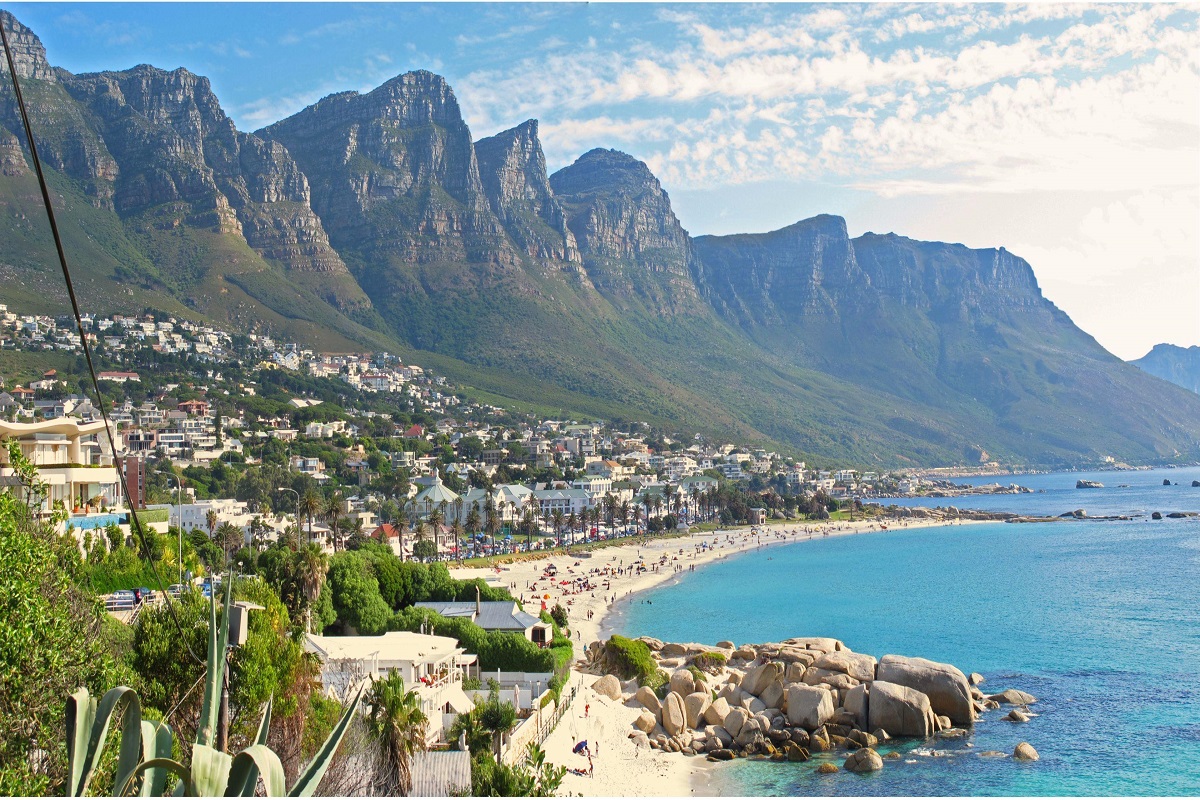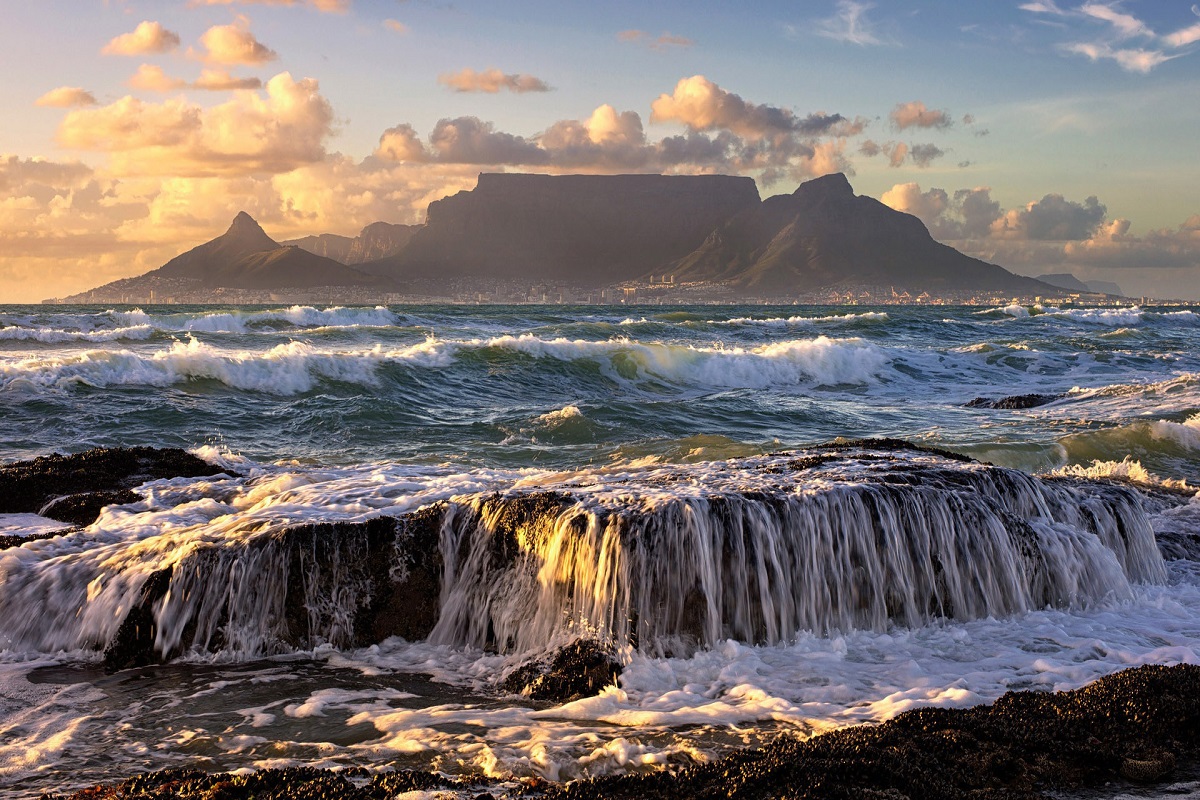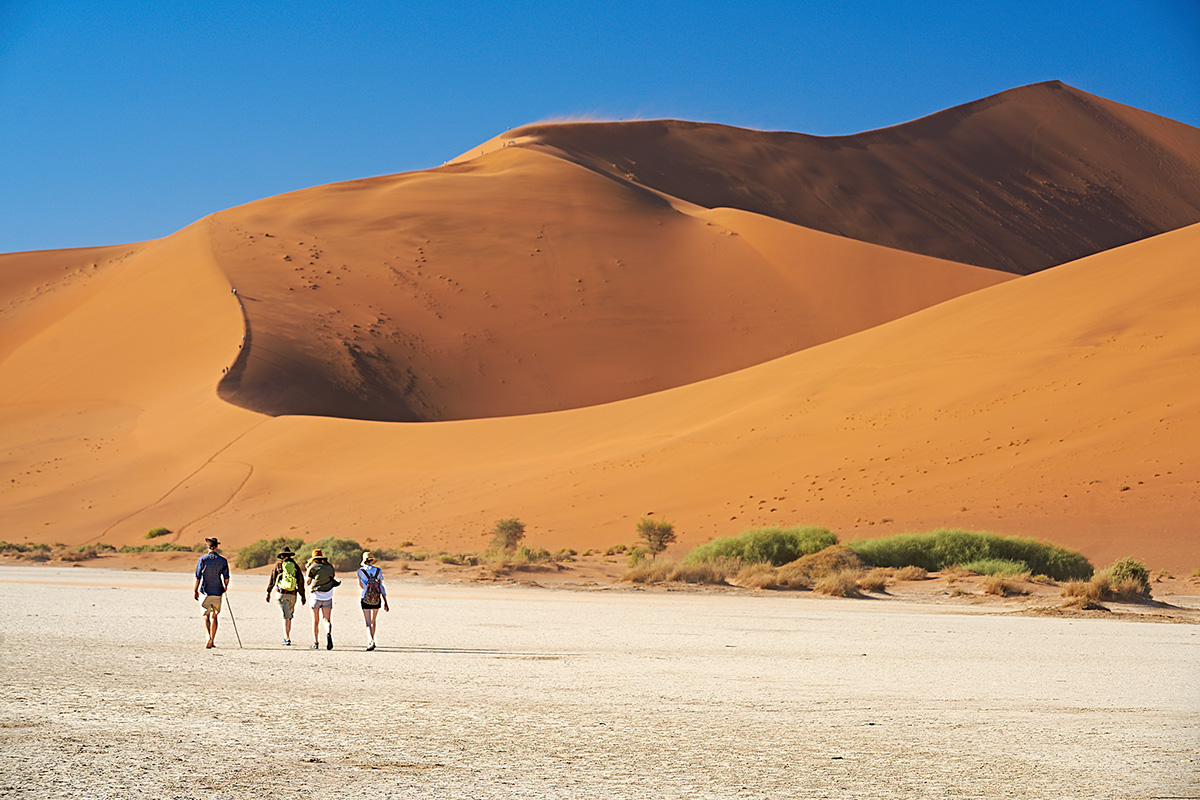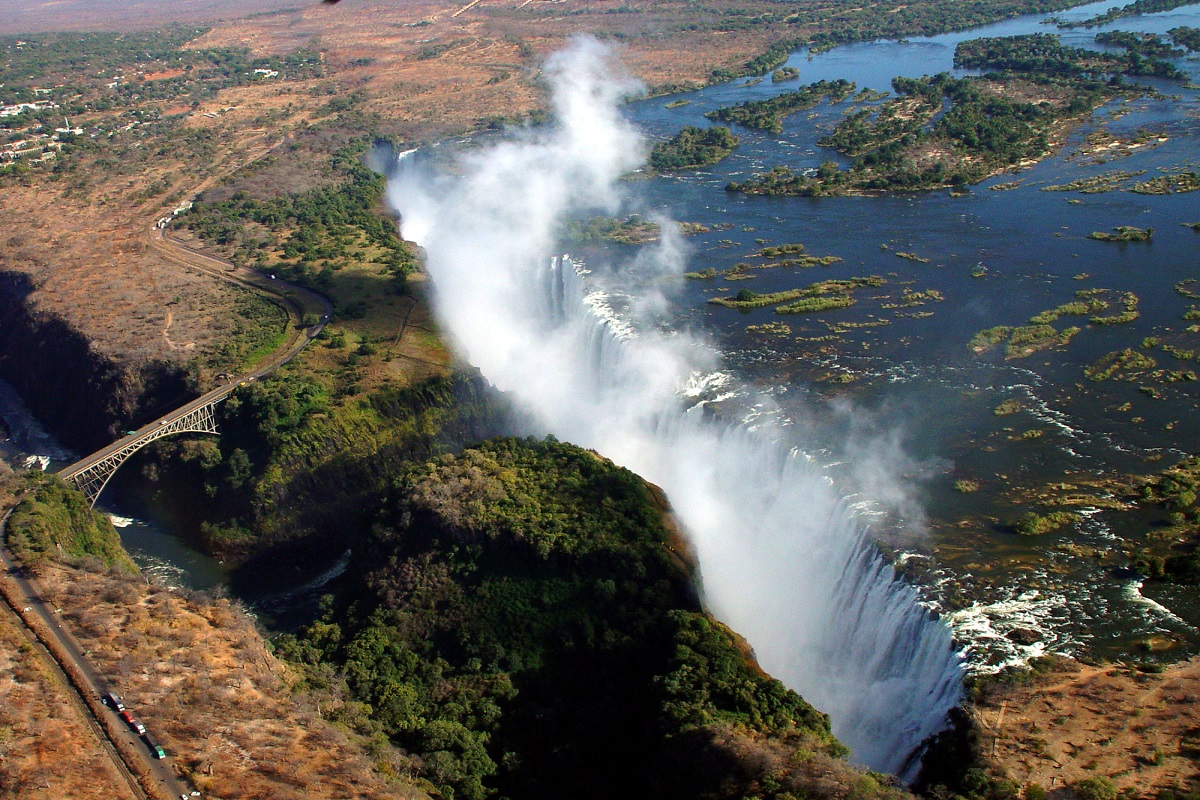Southern Africa
SOUTHERN AFRICA

Overview
This diverse gem at the southern tip of the continent lives up to its bold slogan of ‘a world in one country’.
South Africa’s diversity is superb: from sparkling coastal cities to tropical forests, rolling grasslands to alpine countryside.
There are attractions enough across this varied landscape to entertain and enthral travellers of all ages, from Big 5 game viewing to a handful of natural wonders and the Rainbow Nation’s celebrated cultural heritage. This is the land where 2 oceans meet.
| Bordering Countries | Capital City | Currency |
| Namibia, Mozambique, Botswana, Zimbabwe, Swaziland, Lesotho | Pretoria (executive), Bloemfontein (judicial), Cape Town (legislative) | Rand (ZAR) |
| Official Language | Largest City | Dialling code |
| Afrikaans, English, Ndebele, Pedi, Sotho, Swati, Tshonga,Tswana, Venda, Xhosa and Zulu | Johannesburg | +27 |

When to go
South Africa has a temperate climate and is known for its long sunny days, hence the title: ‘Sunny South Africa’. Most of the provinces have summer rainfall, except for the Western Cape (winter rainfall). Winter is from May to August; Spring from September to October; Summer from November to February and Autumn is from March to April.
Safari in SA: Come in winter (June to August when the grass is short and animals tend to gather around watering holes making them easy to spot).
Beach Holiday: Cape Town’s prime season is December through March, while the East Coast (Durban, KwaZulu-Natal) is pleasant all year round.
Wine Touring: While it’s nice to visit the Western Cape Winelands over the harvest season (February/March), wine touring in South Africa can be considered a perennial activity.
Whale Watching: Prime Southern Right Whale viewing in South African waters is from June through November along the Cape coast. However, it is possible to see whales as far north as KwaZulu-Natal during these months. Peak calving season takes place during July and August, but whales can be seen through September and October.
Shark Cage Diving: May through September (winter) is the peak time to see Great White Sharks in False Bay, South Africa
Fast Fact
South Africa has the longest wine route in the world
Electricity / Voltage
Plugs / sockets are usually an issue when it comes to traveling, so always make sure you travel with a universal plug adapter
The voltage is 220 V
The plug used is M
The electrical frequency is 50 Hz
BOTSWANA

Overview
The Republic of Botswana is a landlocked country created by a vast plateau that provides a natural habitat for a huge variety of African wildlife.
This scenic wonderland draws thousands of tourists from around the world throughout the year. Most visitors arrive under the influence of expensive safari-package operators. Botswana encompasses striking salt pans, diamond-rich deserts and fertile flood plains which teem with game. The jewel in Botswana’s crown is, without a doubt, the Okavango Delta — the largest inland delta in the world. Its seasonal lagoons and waterways are crammed with hovering birds, while zebras and giraffes amble across vast grass flats.
Visitors to Botswana can experience and seek the tranquility of being in an environment that is symbiotic with nature and wildlife.
| Bordering Countries | Capital City | Currency |
| Namibia, South Africa, Zimbabwe, Zambia | Gaborone | Pula (BWP) |
| Official Language | Largest City | Dialling code |
| English | Gaborone | +267 |
When to go
Mainly temperate. Summer, between October and April, can be very hot, but daytime temperatures typically hover around 30°C. The rainy season lasts from January to March. Winter, from May to September, brings cooler weather with an average temperature of 25°C; early mornings and evenings may be cold and frosty, particularly in the Kalahari. The average annual rainfall decreases westwards and southwards.When to go
Best time to visit: April to October
High season: July to October
Low season: December to April
Best weather: June to September
Worst weather: October (unbearable heat) & November (early rains can cause a total wash-out)
Fast Fact
The Makgadikgadi pans are the remaining dry beds of the ancient Lake Makgadikgadi that covered most of northern Botswana and covered an area larger than Switzerland. They are the largest salt pans in the world and are split between 2 pans, the Ntwetwe Pan and the Sowa Pan. The area is visited by wildlife during the rainy season and has spots of vegetation and water for grazing
Electricity / Voltage
Plugs / sockets are usually an issue when it comes to traveling, so always make sure you travel with a universal plug adapter
The voltage is 231V
The plug used is M
The electrical frequency is 50 Hz
NAMIBIA

Overview
The landscape is Namibia’s defining natural asset. You can take in the beautiful wildlife and unique landscapes at your own pace, on your own terms.
Namibia is a land of stark contrasts, where towering dunes meet a tempestuous coastline. As it should be in a land of such contrasts, Namibia offers an endless variety of safari options. Experience the haunting silence of the Kalahari Desert and spot one of 430 bird species in the Caprivi region, search for desert elephants in Damaraland and interact with the astonishing Himba community in the remote Kaokoveld.
You have the opportunity to see Africa’s Big 5 and numerous endemic species against the backdrop of the country’s unique landscape. Namibia is the last place on earth where black rhino roam free across communal land, and is one of two countries in the world that are home to the desert-dwelling elephant.
| Bordering Countries | Capital City | Currency |
| Angola, Botswana, South Africa, Zambia | Windhoek | Namibian Dollar (NAD) |
| Official Language | Largest City | Dialling code |
| English | Windhoek | +264 |
When to go
Namibia can be visited throughout the year. The climate is generally dry and pleasant. Namibia only receives a fraction of the rain experienced by countries further east. Between December to March, some days will be humid and rain may follow, often in localized, afternoon thunderstorms. Wildlife viewing in all parks, but especially in Etosha, is best in the dry season from June to October. In the wet season, animals move away from the waterholes and scatter around the park.
Best time to go: June to October (All parks)
High Season: July to October (Will not feel too crowded, except for Etosha and the main access road in Namib-Naukluft)
Low Season: December to April (All parks are very quiet)
Best Weather: April and May (Moderate temperatures, little to no rainfall, green landscape)
Worst Weather: November to February (Very hot)
Fast Fact
The Namib is a coastal desert in Namibia. Having endured arid or semi-arid conditions for roughly 55 — 80 million years, the Namib may be the oldest desert in the world
Electricity / Voltage
Plugs / sockets are usually an issue when it comes to traveling, so always make sure you travel with a universal plug adapter
The voltage is 220 V
The plug used is M
The electrical frequency is 50 Hz
ZIMBABWE

Overview
Zimbabwe, previously known as Rhodesia during its colonial days, has been the focus of many explorers during the last few centuries. It was Rhodes that orchestrated the building on the first railway line through the country which stretches across the entire African continent, and David Livingstone was the explorer to hear the thunderous sound and say the spray of the world’s largest natural waterfall, the Victoria Falls; named after his sovereign Queen Victoria.
Zimbabwe boasts some amazing natural sites and has a unique landscape, atmosphere, community and culture which set it apart from its fellow Southern African nations. The beauty of this country will easily allow you to forget it’s complicated structure; indulge yourself in the magnificent Victoria Falls, astounding structures of Motopas, observe the African wildlife and take yourself back in time to the Great Zimbabwe Ruins.

| Bordering Countries | Capital City | Currency |
| Botswana, Mozambique, Zambia, South Africa | Harare | Zimbabwean dollar (ZWD). Also accepts South African rand, Botswana pula, pound sterling, euro, and the United States dollar |
| Official Language | Largest City | Dialling code |
| Chewa, Chibarwe, English, Kalanga, Koisan, Nambya, Ndau, Ndebele, Shangani, Shona, Sign language, Sotho, Tonga, Tswana, Venda, Xhosa | Harare | +263 |
Zimbabwe has a pleasant climate and can be visited all year round. Summer runs from November — April and is characterised by high temperatures (often above 30 degrees Celsius) and rain. The winters are cool and dry, ideal for game viewing as animals gather around water sources. Victoria Falls is at its most mighty in April and May after the summer rainy seasonWhen to goWhen to go
Best time to go: May to September (All parks)
High Season: July to October (Won’t feel crowded; only Victoria Falls gets busy)
Low Season: November to April (The parks will be very quiet)
Best Weather: April, May and September (Pleasant temperatures; afternoon rains are rare and seldom interfere with your safari)
Worst Weather: October to February (Very hot in low altitude parks; February to December are the wettest months)
Fast Fact
Lake Kariba, constructed on the River Zambezi, is one of the world’s largest manmade lakes in the world
Electricity / Voltage
Plugs / sockets are usually an issue when it comes to traveling, so always make sure you travel with a universal plug adapter
The voltage is 220 V
The plugs used are D or G
The electrical frequency is 50 Hz

Contacts
AFRICA +27 11 234-5090
NORTH AMERICA 1-877-778-8436 (Toll free)
EUROPE +44 203 286-6770General email: requests@itravelafrica.com
Subscribe
